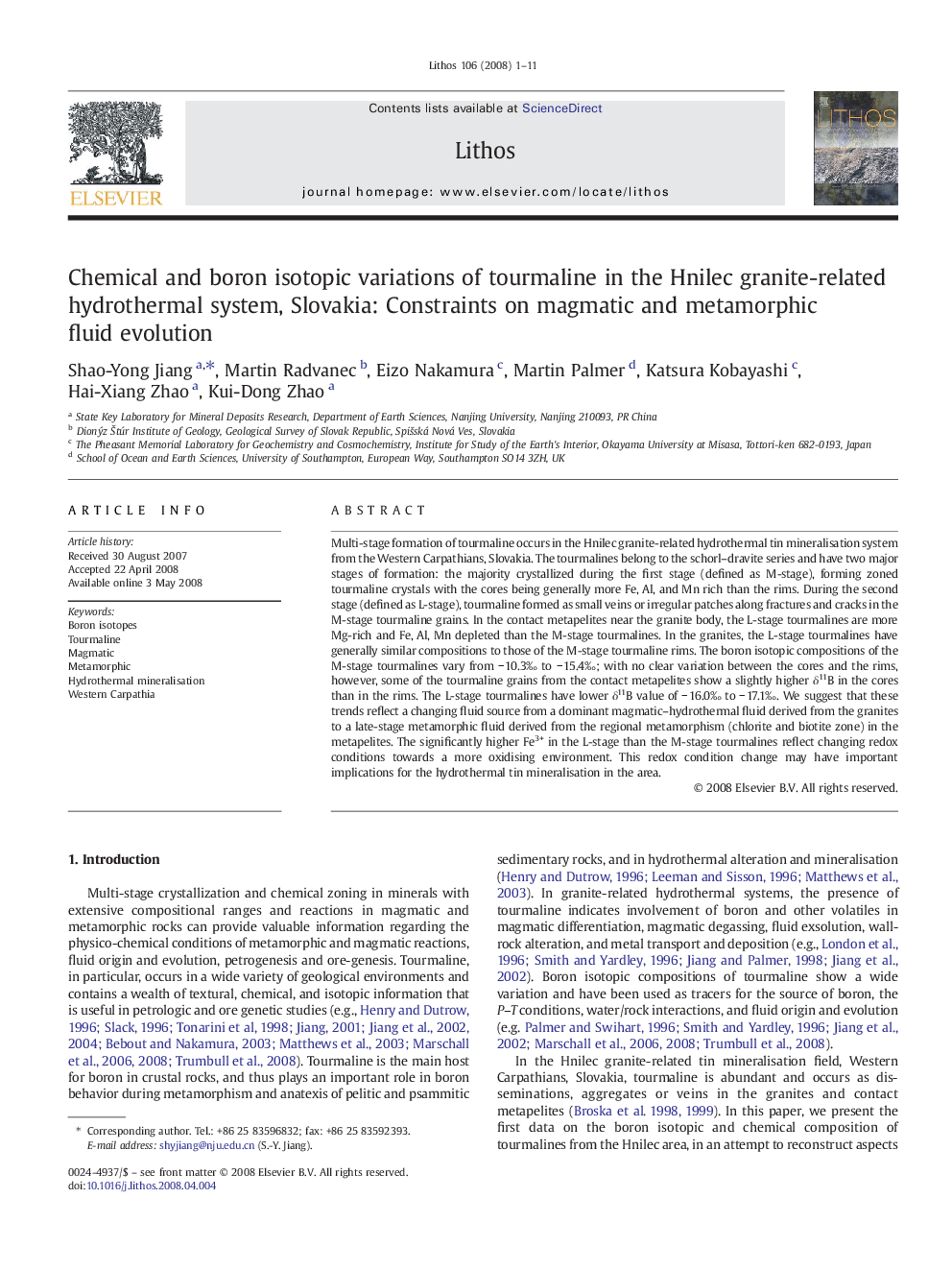| Article ID | Journal | Published Year | Pages | File Type |
|---|---|---|---|---|
| 4717488 | Lithos | 2008 | 11 Pages |
Multi-stage formation of tourmaline occurs in the Hnilec granite-related hydrothermal tin mineralisation system from the Western Carpathians, Slovakia. The tourmalines belong to the schorl–dravite series and have two major stages of formation: the majority crystallized during the first stage (defined as M-stage), forming zoned tourmaline crystals with the cores being generally more Fe, Al, and Mn rich than the rims. During the second stage (defined as L-stage), tourmaline formed as small veins or irregular patches along fractures and cracks in the M-stage tourmaline grains. In the contact metapelites near the granite body, the L-stage tourmalines are more Mg-rich and Fe, Al, Mn depleted than the M-stage tourmalines. In the granites, the L-stage tourmalines have generally similar compositions to those of the M-stage tourmaline rims. The boron isotopic compositions of the M-stage tourmalines vary from − 10.3‰ to − 15.4‰; with no clear variation between the cores and the rims, however, some of the tourmaline grains from the contact metapelites show a slightly higher δ11B in the cores than in the rims. The L-stage tourmalines have lower δ11B value of − 16.0‰ to − 17.1‰. We suggest that these trends reflect a changing fluid source from a dominant magmatic–hydrothermal fluid derived from the granites to a late-stage metamorphic fluid derived from the regional metamorphism (chlorite and biotite zone) in the metapelites. The significantly higher Fe3+ in the L-stage than the M-stage tourmalines reflect changing redox conditions towards a more oxidising environment. This redox condition change may have important implications for the hydrothermal tin mineralisation in the area.
